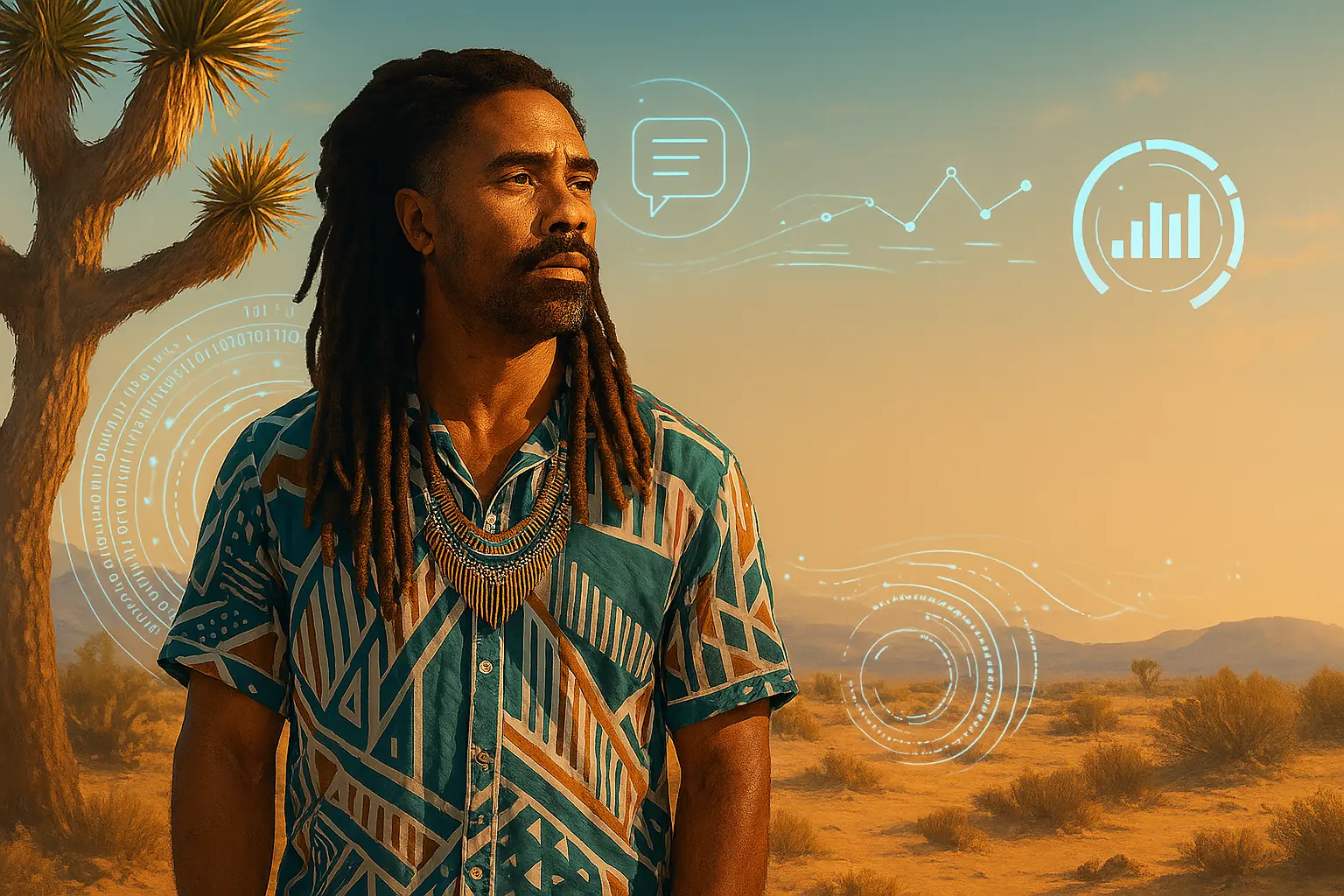In the modern business landscape, data is the most valuable raw material. But raw data, in itself, is just noise. The real competitive advantage lies in the ability to transform that noise into clear signals—transforming raw data into actionable information, information into strategic knowledge, and knowledge into the wisdom that drives decisive, profitable action.
As a business systems architect and creative technologist, my core specialization is in this transformation process. I design and implement systems that don't just collect data, but refine it into a strategic asset that empowers you to make smarter, faster decisions.

Quantitative (Structured) Data
This is the world of numbers and metrics—the measurable facts. We pull this from your CRM, sales reports, and analytics platforms to understand performance at a glance.

Qualitative (Unstructured) Data
This is the human element—the context and sentiment found in customer reviews, social media comments, and support emails. Analyzing this unstructured data is key to understanding the stories and motivations behind the numbers.

Knowledge Management
Delete the above image or replace it with a picture that illustrates your message. Click on the picture to change its rounded corner style.
Understanding Your Data Universe
Every business generates a vast amount of data from different sources. The first step is to understand its nature and potential. I work with the full spectrum of business data to build a complete, 360-degree view of your operations and market landscape.
Tools for Collection & Analysis: To capture and make sense of this data, we leverage a suite of powerful analytics platforms. My expertise includes, but is not limited to:
Google Analytics: To understand how users interact with your website, tracking visitor behavior, conversion paths, and content performance.
Google Search Console: To uncover how customers find you on Google, which search terms they use, and how your site's health impacts visibility.
Social Media Analytics: To measure audience engagement, brand sentiment, and the ROI of your social media strategy across various platforms.
Google Sheets: As a flexible and powerful hub for data analysis, I use Google Sheets to consolidate data from multiple sources, perform advanced calculations, create pivot tables for summarization, and build the foundation for insightful reports.
Data Analysis 101
A Comprehensive Guide to Queries, Integrity Constraints and Text Analysis
Queries and integrity constraints are relevant to text analysis in the context of databases and information retrieval. Queries are used to retrieve specific information or data from a database, while integrity constraints ensure the consistency and accuracy of the data.
In text analysis, queries can be used to filter, sort, or otherwise manipulate the extracted textual data.
Integrity constraints help ensure that the data is accurate and reliable, which is essential for deriving meaningful insights from the analysis.
DiscoverWhy Visualizing Text-Based Data Is The Only Way To Get Your Point Across
In this video, we'll explore the importance of visualizing text-based data through stories, and how user stories and customer journey mapping can help create effective visualizations. We'll start by defining user stories and customer journey mapping, and explain how they can be used to identify potential psychological barriers to user understanding, acceptance, adoption, and change management.
On Knowledge Management: Architecting Your Organizational Legacy
In a world of constant data flow, the ability to capture, organize, and retrieve information is a superpower. A Personal Knowledge Management (PKM) system is essential for productive professionals, but for an organization, a comprehensive Knowledge Management (KM) strategy is the very foundation of its legacy and competitive advantage. Grounded in principles like Cognitive Load Theory, KM transforms scattered information into a structured, accessible asset, preventing burnout and enabling teams to focus on innovation.
However, true Knowledge Management is not a standalone practice; it is the strategic intersection of several critical disciplines:
- Information Science: This is the theoretical backbone. It provides the principles for the entire lifecycle of information—how it's collected, classified, stored, and made accessible. It focuses on the human side of data, ensuring that information is not just stored, but is usable and valuable to the people who need it.
- Information Systems (IS): This is the technological framework. IS professionals build the practical infrastructure—the CRMs, ERPs, and databases—that house and process organizational knowledge. They are the architects who turn the theories of information science into functional, scalable systems that support business operations.
- Decision Science: This is the strategic output. It is the art and science of using the information and knowledge curated by the systems to make high-quality, data-driven business decisions. A decision scientist bridges the gap between raw data and actionable strategy, ensuring that insights lead to tangible outcomes.
The interplay is crucial: Information Science provides the blueprint, Information Systems build the house, and Decision Science is how you live in it to succeed.
This ecosystem faces two persistent threats that a robust KM strategy must address:
- Organizational Legacy Systems: Many businesses run on critical but outdated systems that are inflexible, expensive to maintain, and create information silos. These legacy platforms often lack modern integration capabilities, trapping valuable data and institutional knowledge within them. This makes it incredibly difficult to create a single source of truth, hindering the agility required for modern decision-making.
- Data Decay: Data is not static; it naturally degrades over time. People change jobs, companies are acquired, and information becomes outdated. This "data decay" renders your knowledge base unreliable, leading to flawed analysis, wasted resources, and poor strategic choices. Without active management, your most valuable asset—your data—loses its integrity.
An effective Knowledge Management strategy is the primary defense against these forces. It provides the governance and processes to continuously cleanse, validate, and update information, combating data decay at its source. It also provides a framework for carefully extracting and integrating knowledge from legacy systems, preserving the "organizational legacy" of information even when the technology itself is obsolete. By unifying these disciplines, KM ensures that your information systems are not just repositories of decaying data, but living engines of knowledge that empower intelligent, decisive action.
The Journey from Information to Wisdom
Data alone doesn't lead to better outcomes. It must be processed through a clear framework to become a tool for strategic growth. This is the hierarchy I use to guide decision-making

Data Management
We begin by collecting the raw, unorganized facts from your business systems. Example: "150 website visits from a social media post."

Information Management
Next, we organize and structure that data, giving it context. This is where we clean the data and begin to see patterns.

Knowledge Management
We then analyze this information to understand its implications. This involves comparing it to benchmarks, historical data, and business goals.

Organizational Wisdom
Finally, we apply this knowledge to make strategic, forward-looking decisions. This is the ultimate goal: using insights to guide future actions.
Actionable Dashboards & Reporting
My goal is to move you beyond endless spreadsheets and confusing data exports. I specialize in creating custom dashboards and reports that tell a clear story. By visualizing your most important Key Performance Indicators (KPIs), we create a single source of truth that allows you and your team to monitor the health of your business in real-time and make data-driven decisions with confidence.